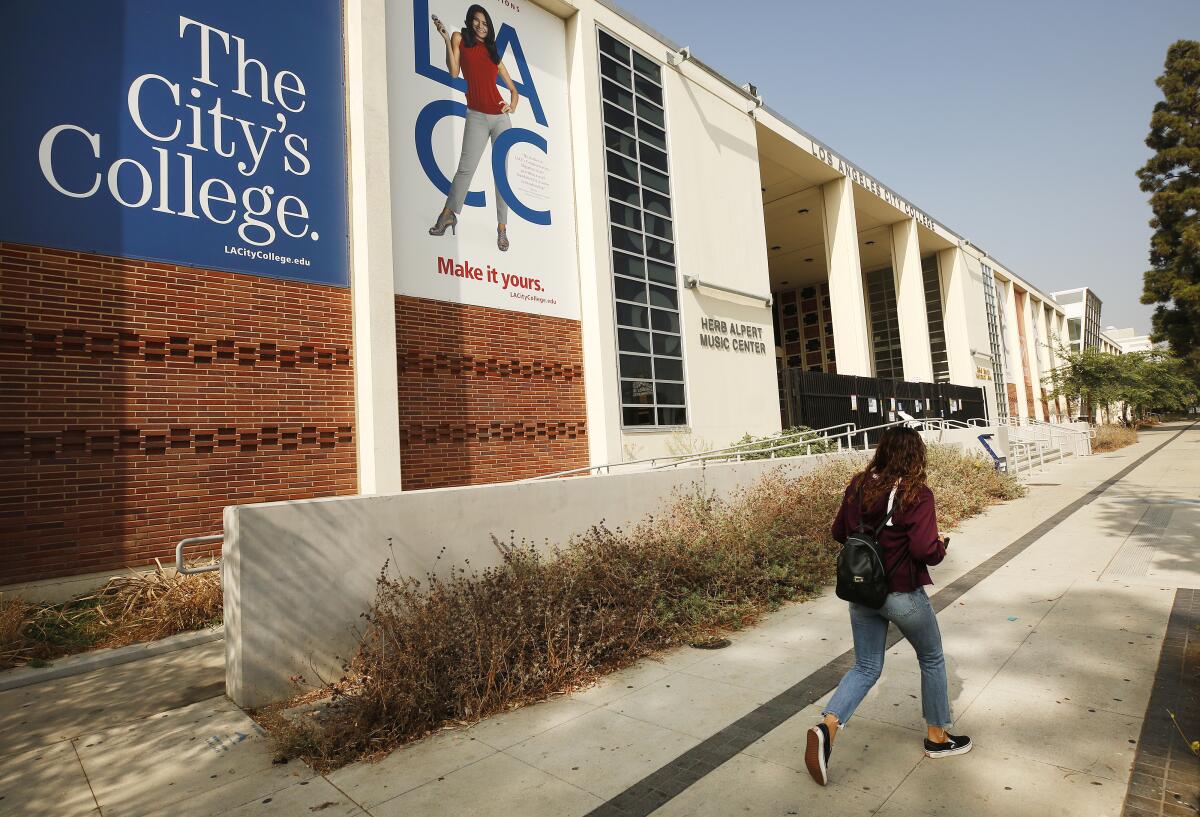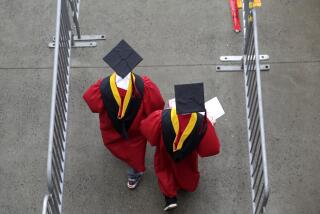Op-Ed: Higher education as a path out of poverty is now more myth than reality

A conspicuous economic divide in the U.S. has persisted between workers with college degrees and workers without them. Social policy since World War II has been built on the idea that people from disadvantaged backgrounds can cross that divide by completing college. Though this once seemed possible, for many it now feels more like a myth.
Using a college degree to earn a higher salary and climb ladders of economic mobility is not as easy as it once was. Instead of alleviating inequality, higher education too often deepens it. We need to admit that, on its own, higher education is not an adequate solution to poverty.
Historically America has relied on higher education as an engine of opportunity, and it has been an important driver of social progress and wealth creation. While equal outcomes have never been guaranteed, equal opportunity has been a crucial underpinning of the American dream.
Our policies, however, have too often diverged from these aims. An early law that provided subsidized higher education was the Servicemen’s Readjustment Act of 1944, commonly known as the GI Bill. The people it helped were primarily white, male veterans being rewarded for their service to the country. After the U.S.S.R.’s launch of Sputnik in 1957, a worrying move in the developing Cold War, the U.S. broadened educational aid specifically for the purposes of national competitiveness and defense, through the National Defense Education Act.
During the civil rights movement, new attention was paid to equity concerns around aid and opportunity in higher education, culminating in the establishment of the federal Pell grant program in 1972. Its purpose was to alleviate the need to borrow among poor students, so as not to discourage them from investing in a college education. But as legislative efforts turned to maintaining college affordability for the middle class in 1978, and Pell grants not increasing with the cost of living, federal policymakers began putting an emphasis on loans instead of grant aid as a method of boosting college enrollment and graduation.
Subsequent administrations, beginning with President Clinton, established tax credits for tuition savings. This disproportionately benefited families with the highest incomes and tax rates.
Higher education’s promised ladder of economic mobility has become a downward slide for most without wealth. As it becomes even more unaffordable and unattainable, it can reinforce class divisions and reproduce existing inequality trends.
Most low-income students who enroll in college avoid taking out loans by attending community and for-profit colleges, which have much lower completion rates than nonprofit colleges and universities.
Community colleges earn two-fifths the revenue compared with public four-year colleges that bring in higher tuition, fees and receive more from state appropriations. From there, though more than 80% of incoming students state an intention to achieve a bachelor’s degree, only 15% ultimately do. At for-profit colleges, an even larger proportion of disadvantaged students attend, paying more to become less likely to graduate, earning credits that do not transfer, using up limited federal financial aid and growing more likely to default on debt.
Meanwhile, wealthier students who graduate from high schools with better means feel more comfortable on college campuses and attend well-resourced institutions where more students graduate within four years.
Only students who finish degrees realize income gains from attending college. However, only about half the students who enter college graduate within six years, a particularly low figure when one considers the weight our society extends to education as a panacea for social and economic ills.
Students who take out loans to cover the cost of education and then default face ongoing financial devastation with particularly limited ability to discharge the debt, even through bankruptcy. Nearly half of African American students default on their student debt within 12 years of leaving college.
Our culture, meanwhile, is laden with fairy tale accounts of the against-all-odds success student, who was fueled by good words, devoted teachers and ample scholarships. These stories often elide race, secondary schooling and broader family dynamics. Low-income students who matriculate at elite institutions can indeed earn almost as much after graduation as wealthy students, but very few low-income students attend elite institutions.
By admitting that the current system of higher education does not function as a solution to poverty, we could begin to call for more direct and effective anti-poverty policies, such as President Biden’s American Rescue Plan, which temporarily expanded the child tax credit and very quickly and substantially reduced child poverty and child hunger.
Additionally, the government should do more to fix inequities that stem from citizens’ attempts to get a college education and should make higher education more accessible to all. The Biden administration’s efforts to grant up to $20,000 in loan forgiveness to millions of Americans focuses exclusively on the issue of runaway debt. While a positive step, it masks the complex economic challenges the current generation of young people face when considering higher education. Programs such as AmeriCorps, for example, operate more proactively by awarding education funds to students up front in exchange for a year of service.
The government must recognize that the higher education system now is not a cure-all for inequality and commit to providing better policies to help those in poverty in addition to offering more solutions to making college affordable. Only then will those in poverty have the assistance they need to find their way out.
Jodie Adams Kirshner is an author and a research professor at New York University’s Marron Institute. Her forthcoming book is “After a Generation of Dreams.”
More to Read
A cure for the common opinion
Get thought-provoking perspectives with our weekly newsletter.
You may occasionally receive promotional content from the Los Angeles Times.










